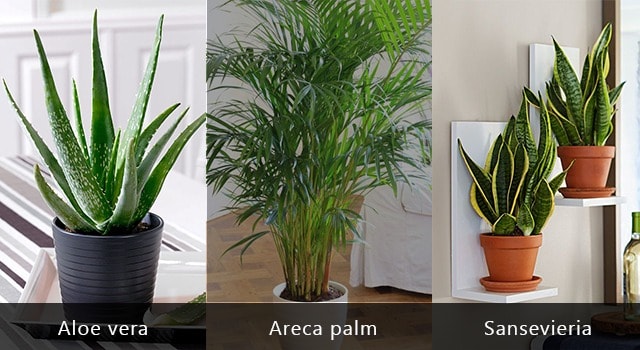Understanding Indoor Air Quality - Some Frequently Asked Questions
We know when food is dirty or water is impure, and take every precaution before consuming them. But when it comes to air, we do not realize how polluted it is because we cannot see it. A person with normal activity level breathes in 2 gallons of air every minute, that is close to 3000 gallons of air every day.
India has consistently ranked among the most polluted nations in the world [1]. There are many ways to measure air pollution, but PM2.5 is considered one of the key indicators - as it is one of the most harmful classes of airborne pollutants. PM2.5 are lighter and go deeper into the lungs and cause greater damage in the longer term. Using masks, installing air purifiers, and monitoring the air we breathe at all times, are some of the steps we can take to minimize our exposure to air pollution and breathe well.
Here are some frequently asked questions regarding respiratory wellness as well as tips on keeping the indoor air quality at home good.
Can air quality indoors be as bad as outdoor?
Indoor air quality can often be as bad, sometimes worse than outdoors. Cooking, smoking indoors, burning incense sticks, room fresheners, sprays, deodorants, even volatile chemicals from fragrances used in conventional cleaners – all these contribute to the air pollution found inside the homes.
Airveda Tip -
Make your home a no-smoking zone. Use exhausts and chimneys while cooking, avoid incense sticks and vaporizers, check the chemicals in your room fresheners and detergents, vacuum regularly to reduce dust, mites, mold, pet dander, avoid air drying clothes indoors.
Are there any particular chemicals one should watch out for while buying cleaning products?
There are certain classes of substances one should check before buying cleaning products. Conventional laundry detergents, fabric softeners, dryer sheets, and air fresheners in solid, spray, and oil form emit volatile organic compounds (VOC’s). Dyes, detergents, paint solvents, plastics, pesticides, adhesives, lubricants, dry cleaning agents release benzene, which contribute to indoor PM2.5. Also look for quaternary ammonium compounds (QACs), especially Quaternium-15 which releases formaldehyde - a known carcinogen. Formaldehyde is also found in glues, environmental tobacco smoke, and in the pressed wood used in furniture.
WHO provides a list of commonly used chemicals in detergents, dyes and paints in its guidelines for indoor air quality, which can be found here.
Airveda Tip -
Before purchasing any chemical-based products - detergents, deodorants, air fresheners, adhesives, etc., check the contents on the packet. If they contain any of the classes of substances mentioned above, avoid purchasing. Alternatively, switch to organic products and natural detergents.
What are the things that I should look for while buying an air purifier? Does room size play a role?
Given the high PM2.5 concentrations in India, it is essential to buy a purifier with a HEPA filter which protects you against very small PM2.5 particles. You also need a pre-filter which catches the bigger particles preventing the HEPA from getting clogged quickly. Additional levels of filtration are nice to have.
The Association of Home Appliance Manufacturers (AHAM) developed the CADR, otherwise known as the “Clean Air Delivery Rate”. Based on our study, CADR is the best metric to determine effectiveness of a purifier. If you are trying to pick between a few purifiers of same cost, go with the one with the higher CADR.
The effectiveness of a purifier depends on the size of the room and the leakage in the room. For rooms with greater size, or high leakage, you will need purifier with higher CADR or multiple purifiers. The best way to determine effectiveness is to measure levels in the room with an air quality monitor after the purifier has been running for at least 30 minutes. Also note that the specified CADR is always based on purifier running at highest speed.
AHAM recommends that filters should be used in rooms whose volumes, expressed in cubic feet are equal or smaller than the filter’s CADR rating multiplied by 12. For Indian conditions you should double these required CADR. Assuming height of the room to be 8ft:
- For a 818 sq ft room, CADR should be at least 545 (818*8/12).
- For a 680 sq ft room, CADR should be at least 453(680*8/12).
- For a 450 sq ft room, CADR should be at least 300(450*8/12).
- For a 200 sq ft room, CADR should be at least 134(200*8/12).
Air quality will definitely be cleaner near the purifier - so place your air quality monitor near where you are. You can find more details on air purifiers in this study conducted by Airveda.
Do air purifying plants really help?
As per a NASA study, plants absorb various types of VOCs along with carbon dioxide. They provide a settling mechanism for molds and dust. Additionally, the microbes in the potting soil also absorb certain compounds. Bringing in air purifying plants is a cheap and easy way to improve the air quality of your home while bringing color and texture into your space.
Airveda Tip -
Some plants that grow easily in Indian climate are areca palm, money plant, snake plant or sansevieria, aloe vera, and spider plants. Snake plants are great for bedrooms because they release oxygen at night and need very little maintenance and water. Remember to prune, air them in sunlight regularly and water them only as much as necessary to avoid mold. Here is a list of 17 other plants you may wish to consider for your home.

Do I need a humidifier with an air purifier?
The air in your home should range from 30% to 60% humidity. Winters in north India usually have moderate humidity so you really don't need humidifiers or dehumidifiers. However summers can become very dry and monsoon seasons may have very high humidity. Humidity patterns are different in different parts of the country. Use a humidifier or dehumidifier to keep the humidity within optimum levels.
Airveda Tip -
Check the humidity levels at home using a humidity monitor to decide on the need for a humidifier or de-humidifier.
References: [1] World Health Organization and International Energy Agency data.

